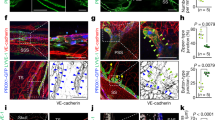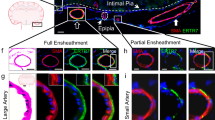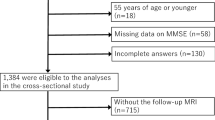Abstract
SINCE the early part of this century arachnoidal cell clusters in man have generally been accepted as a manifestation of advancing age. They were first described by Meyer1 as a post-mortem finding in the meninges of patients suffering from mental disease. It has since become evident that they occurred not only in man but also in various laboratory animals2,3. Their association with advancing age can be attributed largely to the work of Weed4, who, in a series of cats of different ages, reported that in very old animals the cell clusters were always present, while in very young animals they were never found.
This is a preview of subscription content, access via your institution
Access options
Subscribe to this journal
Receive 51 print issues and online access
$199.00 per year
only $3.90 per issue
Buy this article
- Purchase on Springer Link
- Instant access to full article PDF
Prices may be subject to local taxes which are calculated during checkout
Similar content being viewed by others
References
Meyer, L., Virchows Arch. Path. Anat., 17, 209 (1859).
Cushing, H., and Weed, L. H., Johns Hopkins Hosp. Bull., 26, 297 (1915).
Essick, C. R., Contr. Embryol. 110, Pub. 394, 377 (Carnegie Inst., Washington, 1920).
Weed, L. H., Johns Hopkins Hosp. Bull., 31, 343 (1920).
Chornyak, J., Bull. U.S. Army Med. Dept., 8, 695 (1948).
Author information
Authors and Affiliations
Rights and permissions
About this article
Cite this article
WATT, J. Significance of Arachnoidal Cell Clusters in Man. Nature 194, 880–881 (1962). https://doi.org/10.1038/194880b0
Issue Date:
DOI: https://doi.org/10.1038/194880b0
This article is cited by
-
Arachnoidal cell clusters in the lizardLacerta lepida
Experientia (1962)
Comments
By submitting a comment you agree to abide by our Terms and Community Guidelines. If you find something abusive or that does not comply with our terms or guidelines please flag it as inappropriate.



